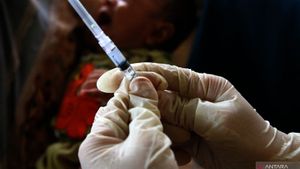JAKARTA - Children who are overweight are at a higher risk of experiencing health problems. Especially if the child is included in the category of obesity. Various diseases lurk children who are overweight or obese, such as type 2 diabetes, metabolic syndrome, asthma or shortness of breath, sleep disorders, to experiencing early puberty. Psychologically, overweight children are also prone to behavioral disorders.
But, does that mean it's better to be skinny than fat? Overcoming obesity is indeed more difficult than overcoming the 'thin problem'. However, this also depends on whether the child is really thin or just looks skinny. Of course these are two different things. Remember, there are still many assumptions that fat children are healthier or better than thin children, so many parents are upset when they see their children are thinner than other children.
To determine whether a child is thin or just looks thin, the same method as to determine whether a child is overweight is to plot his weight on a weight growth curve and Body Mass Index table. To be sure, children who are underweight due to lack of nutritional intake are more susceptible to disease than children with normal weight.
The body's immune system, which is supposed to fight germs and protect the child's body, will be weaker if the nutritional intake and body weight are less. Researchers Ayodele Ogunleye and Gavin Sandermatch from the University of Essex, launched Parenting, Monday, November 8, found that children who are below normal weight are also more at risk of developing osteoporosis.
The most worrying thing is that being underweight can also cause the child to be low in height and fail to thrive. But, again, to be sure, serious monitoring is needed by looking at the child's growth curve, even consulting a doctor.
The doctor will check the nutritional intake and the presence or absence of organ abnormalities. If necessary, various tests will be carried out to find the cause of the weight loss, such as blood tests to see whether there is anemia (lack of red blood cells), iron adequacy, infection, hormone tests, bone age examination, and several other things.
If the results of the examination of the child are not found to have diseases or abnormalities in body functions that interfere with their development, you must increase their nutritional intake through the provision of high-calorie foods. Try feeding him more often, like 6 times a day. Make sure the type of food is also nutritious, contains enough carbohydrates, protein, fat, and vitamins and minerals. Just because a child is underweight, this doesn't mean that he or she can eat as much junk and fast food as possible at every meal.
The English, Chinese, Japanese, Arabic, and French versions are automatically generated by the AI. So there may still be inaccuracies in translating, please always see Indonesian as our main language. (system supported by DigitalSiber.id)













